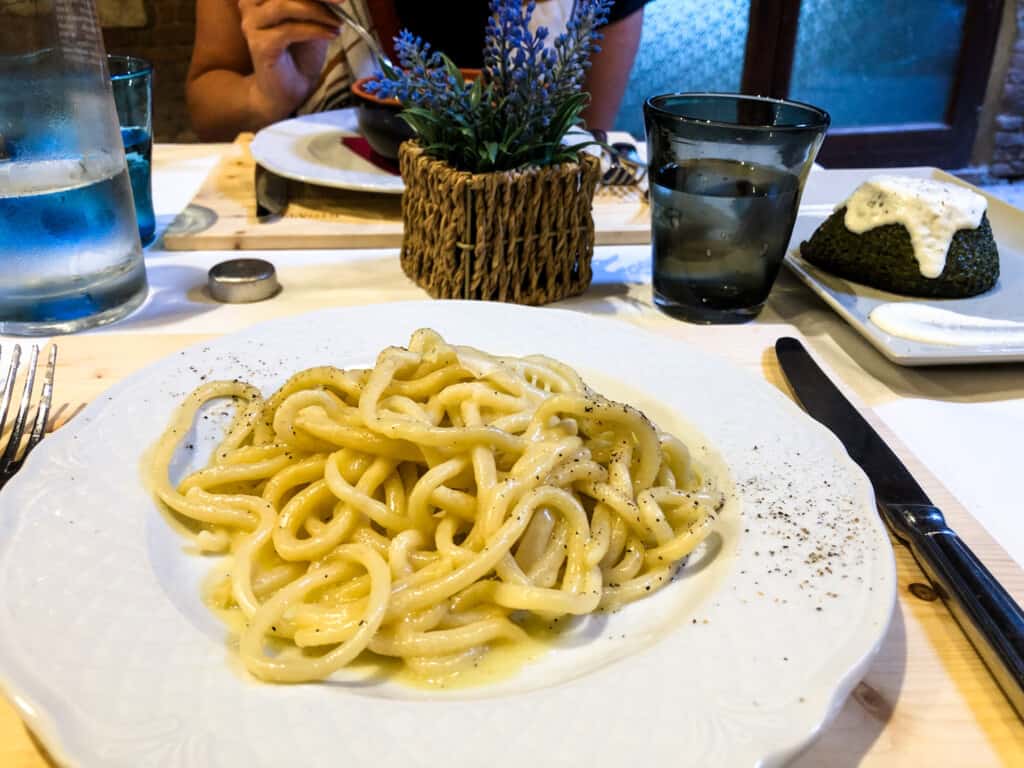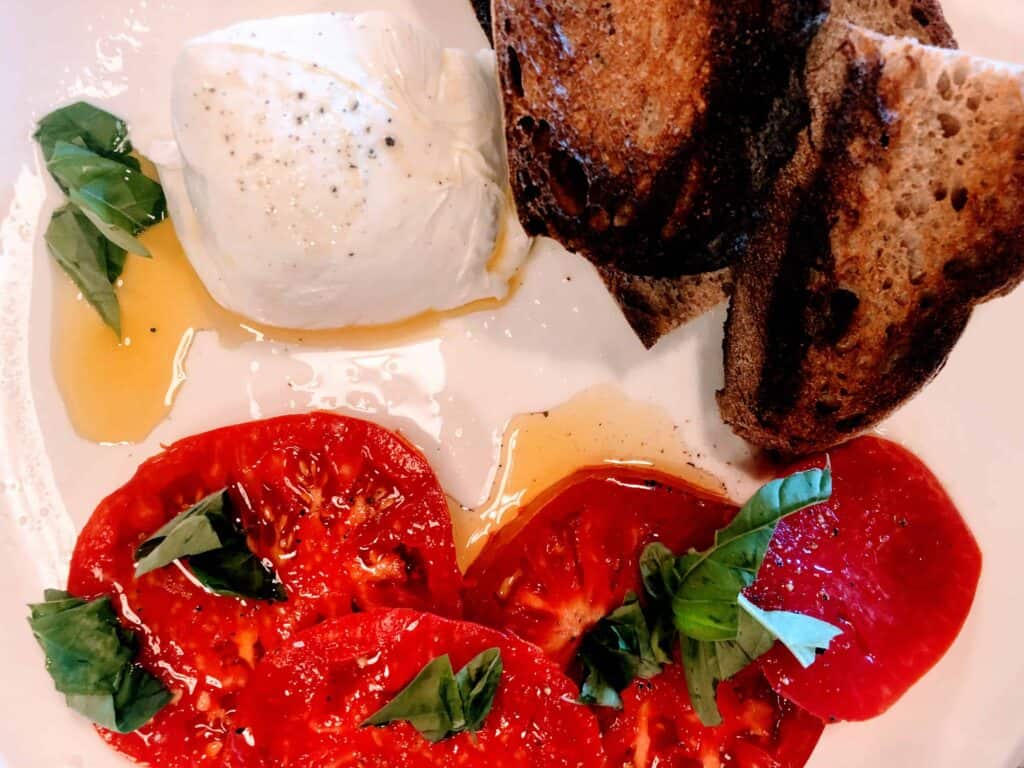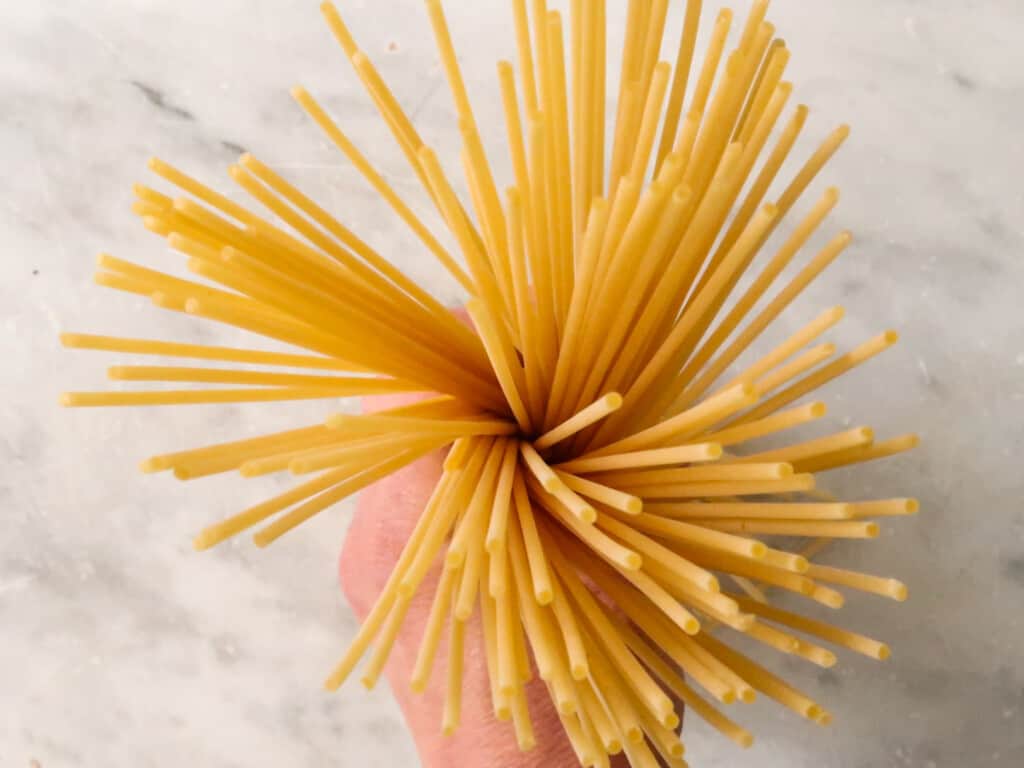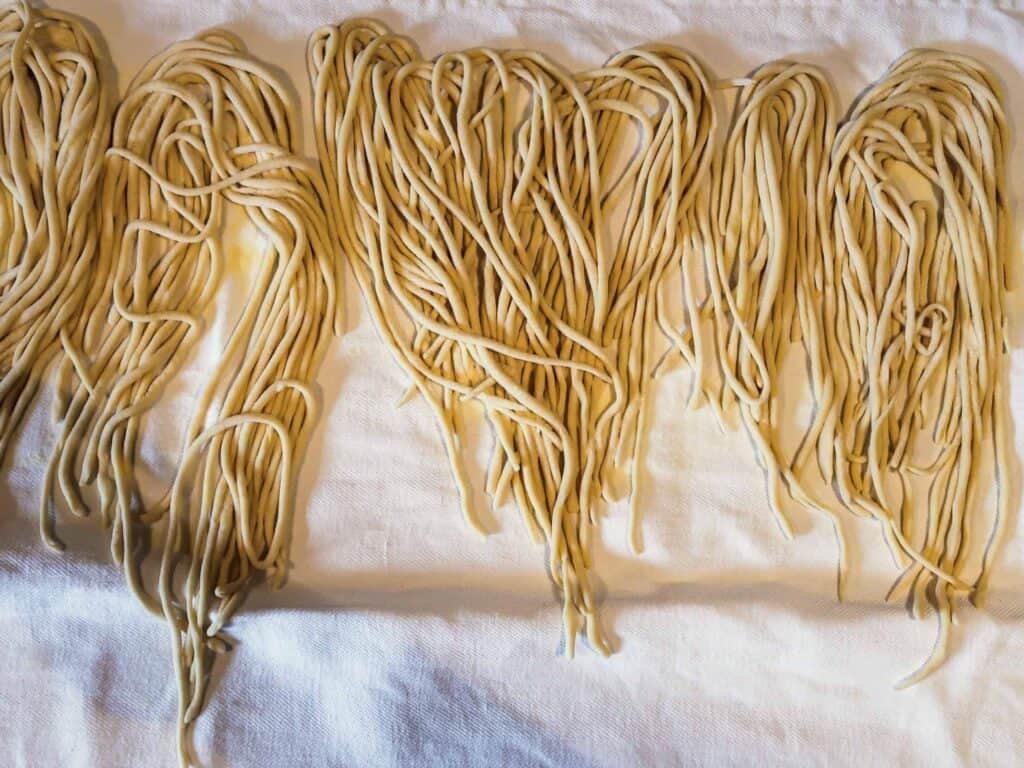Last updated on April 19th, 2024
Jump to Section
What is Cacio e Pepe?
Cacio e pepe is one of the oldest Italian pasta recipes dating back to Roman times that is still extremely popular in Rome today. It is very simple, made with just three ingredients (four if you count the pasta water): sheep’s milk cheese, black pepper and pasta.
Pecorino cheese, known as cacio in Roman dialect, is a sheep’s milk cheese that was produced through the Mediterranean, in North Africa and also in Asia Minor, dating back to 3,000 years before Christ. It is said that the Ancient Greeks perfected the art while the Romans helped spread the love for this cheese as they expanded their empire.
Pepe has been around for even longer since the times of Ancient Egyptians where archaeologists have found mummies adorn with peppercorns. Pepper made its way through Ancient Greece and the Roman Empire about 2,500 years ago as an expensive spice, sometimes even used as currency.
Shepherds created this recipe during the Roman times as a good way to stay full and warm while out watching and herding sheep during the endless spring and summer months when the sheep would be out grazing through the Apennine Mountains (known as transumanza in Italiano). The shepherds would bring a kind of homemade spaghetti called tonnarelli by the bagful with them and with the cheese they could make with the sheep’s milk they had a pretty good start to a great pasta.
They say that the shepherds would add freshly ground or crushed black pepper to the pasta as it is said to keep you warm during the chilly evenings in the mountains.

The perfect pasta in short:
- Cacio cheese has a long shelf life and could be packed for long months out.
- Pepper is said to help the shepherds stay warm during cold night weather in the Apennine Mountains
- Pasta had all the calories they needed for a substantial meal to keep them going.
Cacio e pepe has lived on through the ages and is still to this day one of the most common and loved pastas in Rome and throughout Lazio. You can’t go into a restaurant and not see it on the menu!
Today it is often made with normal spaghetti (n.5) but the authentic recipe calls for tonnarelli which is similar to spaghetti but slightly thinner and made with eggs making for a chewier pasta than a traditional pasta asciutta or dried pasta like spaghetti.
Read about more Popular Italian Pasta Sauces.
Learn More: Study up on formaggio with our Complete Guide to Italian Cheese!
More Veg Please: Check out my list of Vegetarian Dishes to Try in Italy.
Cacio e Pepe Pronunciation
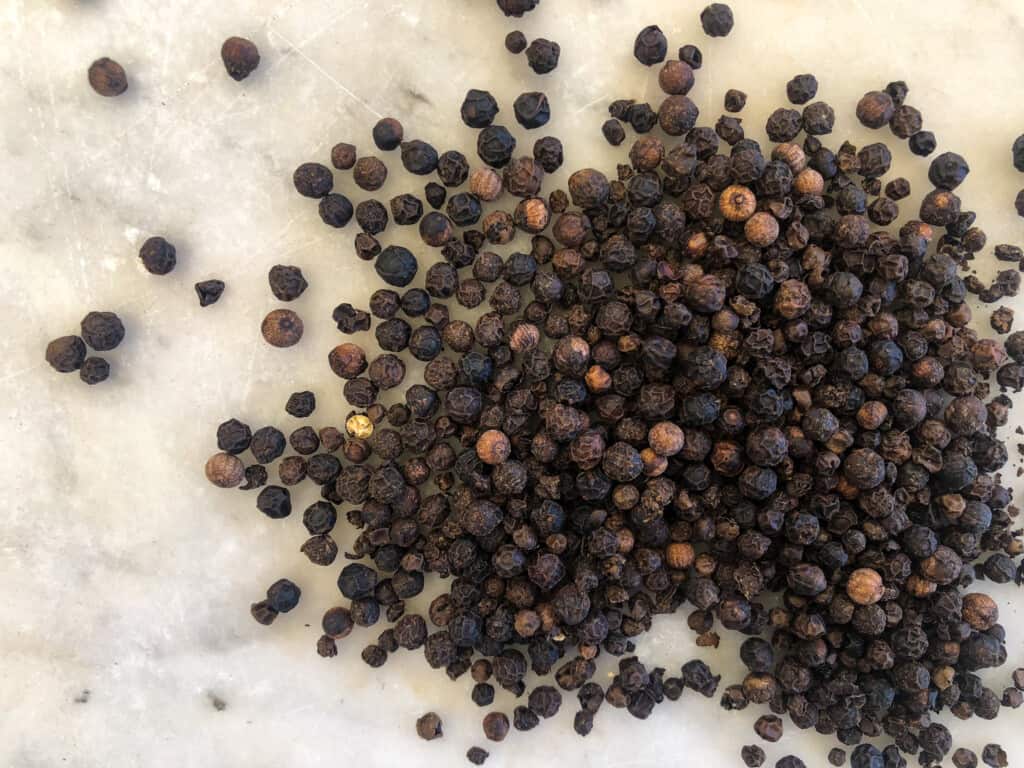
Cacio e Pepe is pronounced CAH-choh eh PEH-peh.
Listen to our Roman friend pronounce cacio e pepe:
The Italian letter c is pronounced differently depending on the letter that follows it. It can be quite confusing but after studying Italian for many years and now using it daily, I finally have a handle on it.
- CI (pronounced CHEE in Italian), example: cipolla, spinaci
- CE (pronounced CHEY in Italian), example: pancetta, cena
- CHI (pronounced KEE in Italian), example: gnocchi
- CHE (pronounced KEY in Italian) example: bruschetta
- CIO (pronounced CHOH in Italian) example: cacio, cioccolato
Learn How to Pronounce Parmigiano.
Cacio e Pepe Translation
Cacio e pepe literally means “cheese and pepper” in Italian. The only other thing you need for this simple Roman dish is a good pasta lunga (long pasta) such as spaghetti and a bit of pasta water (the real secret to making any good Italian pasta).
Where to Find Cacio e Pepe in Italy
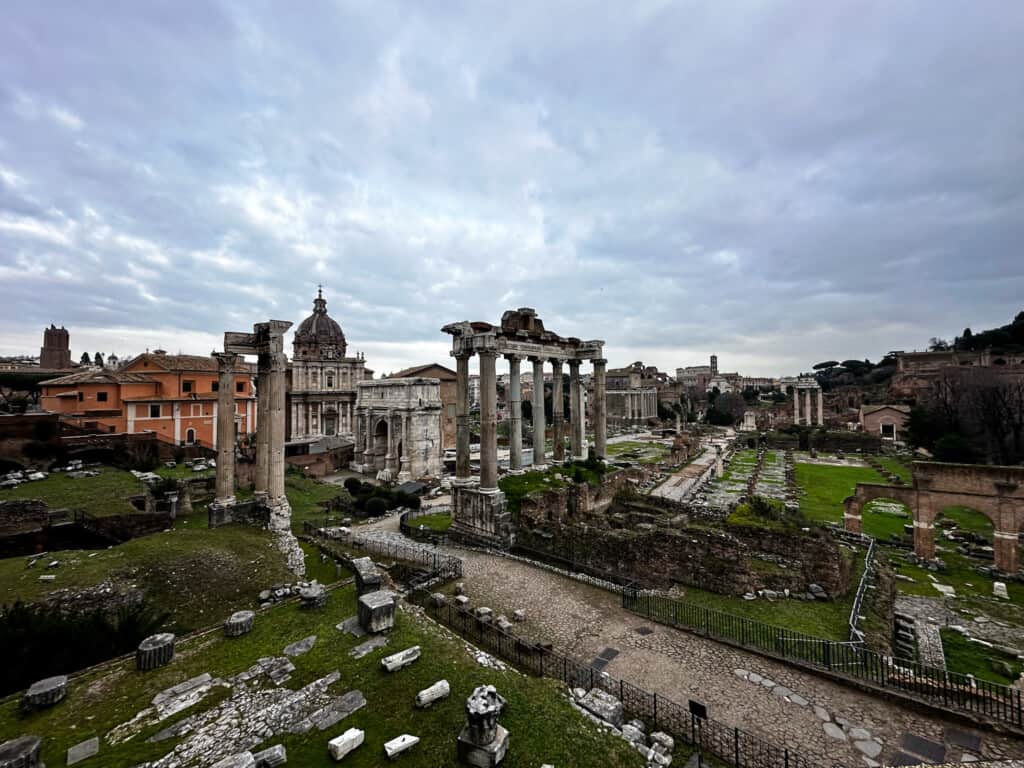
Cacio e pepe, as previously mentioned, is a Roman pasta dish. You will find it throughout Lazio but Rome is where you will get the most authentic experience. Although Rome is a big city, no matter where you are, be it the historical city center, up the hill at Villa Borghese, or in the Roman suburbs, this pasta will always be on the menu.
Our Top Picks for Cacio e Pepe in Rome:
- Flavio al Velavevodetto (Via di Monte Testaccio, 97) – considered by many the best cacio e pepe in Rome.
- La Torricella (Via Evangelista Torricelli, 2/12) – best known for their fish but their pastas are also excellent.
- Roscioli Salumeria con Cucina (Via dei Giubbonari, 21) – here the cacio e pepe is made with both pecorino romano and parmigiano reggiano. Great central location.
- Da Enzo (Via dei Vascellari, 29) – a great restaurant in the cutest and most authentic neighborhood in central Rome, Trastevere.
- Osteria dell’Angelo (Via G. Bettolo 24-32) – prices are great and it’s very close to the Vatican making for the perfect lunch after a morning of sightseeing.
- Trattoria Da Danilo (Via Petrarca, 13) – a fun experience for adults and kids. The trattoria’s waiters will mix your pasta up for you at the table in a hollowed-out pecorino cheese wheel!
- Roma Sparita (Piazza di Santa Cecilia, 24) – They have a wonderful terrace overlooking the piazza.
- Felice a Testaccio (Via Mastro Giorgio, 29) – a higher-end but old-school feel Roman restaurant.
Foodie Tip: Sbanco, Sforno and Tonda are three sister pizzerias made famous with their cacio e pepe pizza.
Cacio e Pepe Ingredients

- cacio or Pecorino Romano cheese (medium-aged sheep’s milk)
- freshly ground black pepper to taste
- long pasta such as spaghetti n.5 will work too.
- starchy pasta water
Cacio e Pepe Recipe
For 4 people
The technique is not quite as easy as it looks, so it may take a couple of tries to get it down perfectly without lumps in your sauce. Be patient and don’t give up; it’s worth it. Be sure to use a whisk and keep whisking until the cheese is fully melted before adding more!
Ingredients:
- 400 grams spaghetti
- 250 grams Pecorino Romano/cacio DOP*
- Whole black peppercorns – about 2 tablespoons
- salt to taste
Method:
- Cook the pasta in a large pot of salted water. Check out our full article here on How To Cook Pasta Like An Italian.
- While the pasta is cooking, finely grate the cheese.
- Freshly grind the pepper with a pepper mill that will give you big pieces or smash with the back of your knife.
- For authentic roman cacio e pepe, toast the smashed black pepper or medium low heat in a saute pan, about 2 minutes until you start to smell a strong aroma.
- Slowly add pasta water into the cheese until a cream is formed. The moment you see a cream-like consistency stop immediately or the mixture might curdle.
- When the pasta tests al dente drain well. Read our article here describing how to cook pasta al dente for a detailed explanation.
- Add the al dente pasta directly into the sauce to coat.
- Add more grated cacio and the toasted ground black pepper, don’t hold back!
* It is essential you use Pecorino Romano, NOT pecorino fresco, stagionato or semi-stagionato.

Cacio e Pepe – Cooking Tips from Italy
- Serve immediately and eat quickly because creamy pasta like this tends to clump together when it cools off
- If the pasta seems a bit too dry it is because you need to add just a bit more of the pasta water.
- To achieve the cremina or cream-like cheese sauce you need to balance the right amount of cheese and pasta water. No ratio exists because every cheese will react differently, depending on how long it was aged, what the sheep ate, etc.
- Some swear by this secret rule: finish cooking the pasta over low heat in a pan allowing the last bit of starches out of the pasts which helps bind the sauce to the pasta.
- An authentic cacio e pepe does not include oil, cream or butter. It’s all about getting the right cheese to pasta water ratio for perfectly creamy sauce.
Cacio e Pepe – Substitutes
If you are in a pinch and have a hankering for a creamy cacio e pepe style pasta go ahead and make it with parmigiano Reggiano instead. In fact, some Romans will actually make this pasta with a mix of cacio and parmigiano because it has less of a pungent taste.
Do you enjoy making and eating Italian pasta? If so, check out these recipes:
Orecchiette Pasta Recipe
Pici Pasta Recipe – How To Make Tuscany’s Hand Rolled Spaghetti
Tagliatelle Recipe + How to Pronounce It
Cacio e Pepe Recipe – Pronounce it and Make it Like an Italian (+ Audio)
Fresh Pomodoro Sauce Recipe – An Italian Summer Tradition
Pomodoro Sauce Recipe – Made With Canned Tomatoes
Creamy Kale Pasta Recipe
Italian Kale Pesto Recipe
Aglione Sauce Recipe
Pappardelle alla Boscaiola Recipe

Cacio e Pepe
Ingredients
- 400 grams spaghetti
- 250 grams Pecorino Romano/cacio DOP (NOT pecorino fresco, stagionato or semi-stagionato)
- 2 Tbsp whole black peppercorns
- salt to taste
Instructions
- Cook the pasta in a large pot of salted water.
- While the pasta is cooking, finely grate the cheese.
- Freshly grind the pepper with a pepper mill that will give you big pieces or smash with the back of your knife.
- For authentic Roman cacio e pepe, toast the smashed black pepper or medium low heat in a saute pan, about 2 minutes until you start to smell a strong aroma.
- Slowly add pasta water into the cheese until a cream is formed. The moment you see a cream-like consistency stop immediately or the mixture might curdle.
- When the pasta tests al dente drain well.
- Add the al dente pasta directly into the sauce to coat.
- Add more grated cacio and the toasted ground black pepper, don’t hold back!
Notes
- Serve immediately and eat quickly because creamy pasta like this tends to clump together when it cools off
- If the pasta seems a bit too dry it is because you need to add just a bit more of the pasta water.
- To achieve the cremina or cream-like cheese sauce you need to balance the right amount of cheese and pasta water. There is no ratio because every cheese will react differently, depending on how long it was aged, what the sheep ate, etc.
- Some swear by this secret rule: finish cooking the pasta over low heat in a pan allowing the last bit of starches out of the pasts which helps bind the sauce to the pasta.
- A real cacio e pepe does not include oil, cream or butter. It’s all about getting the right ratio of cheese to pasta water for perfectly creamy sauce.
